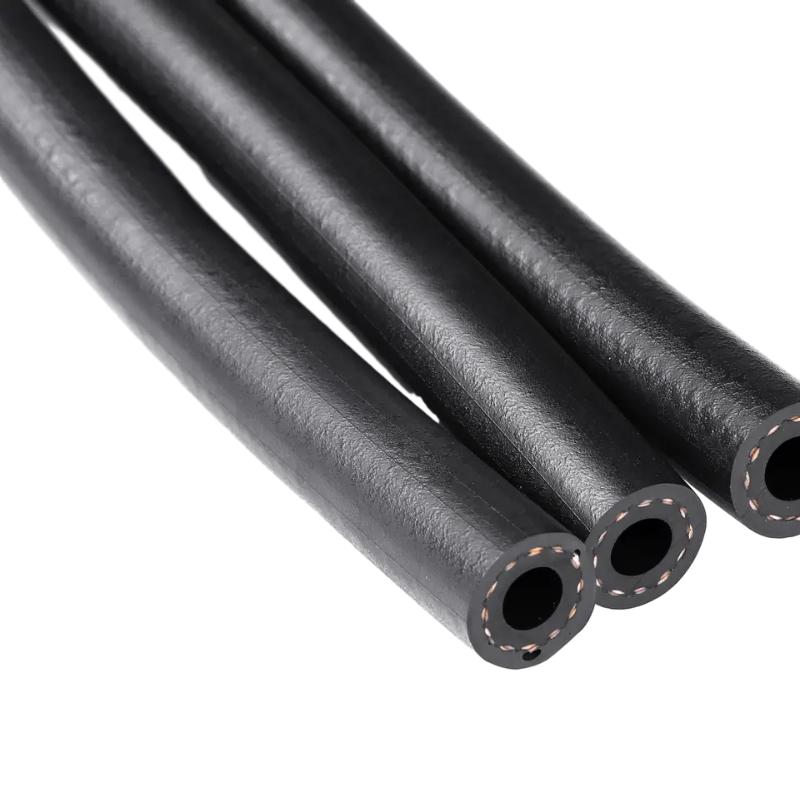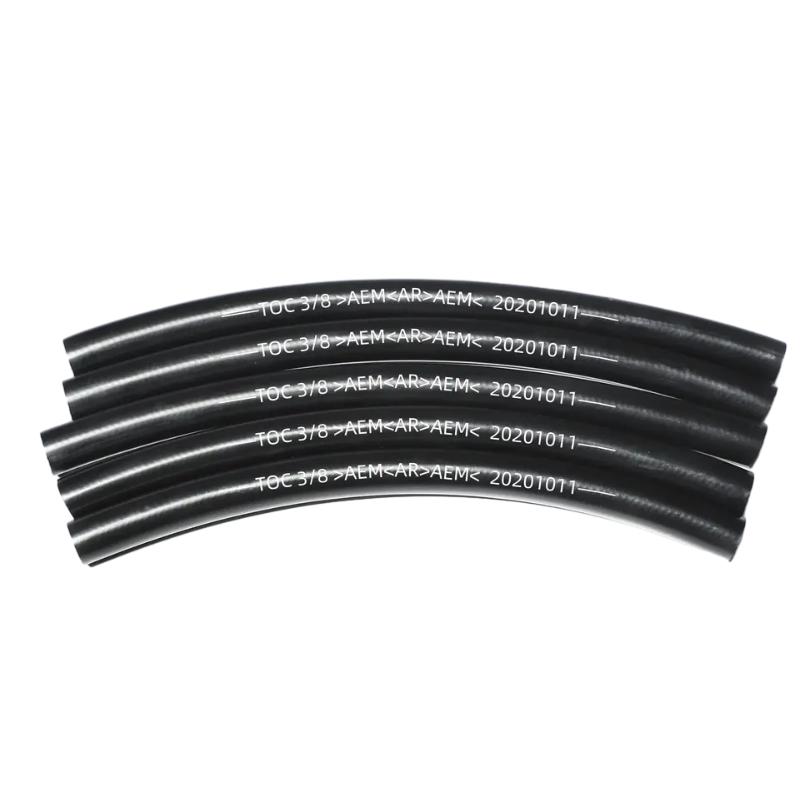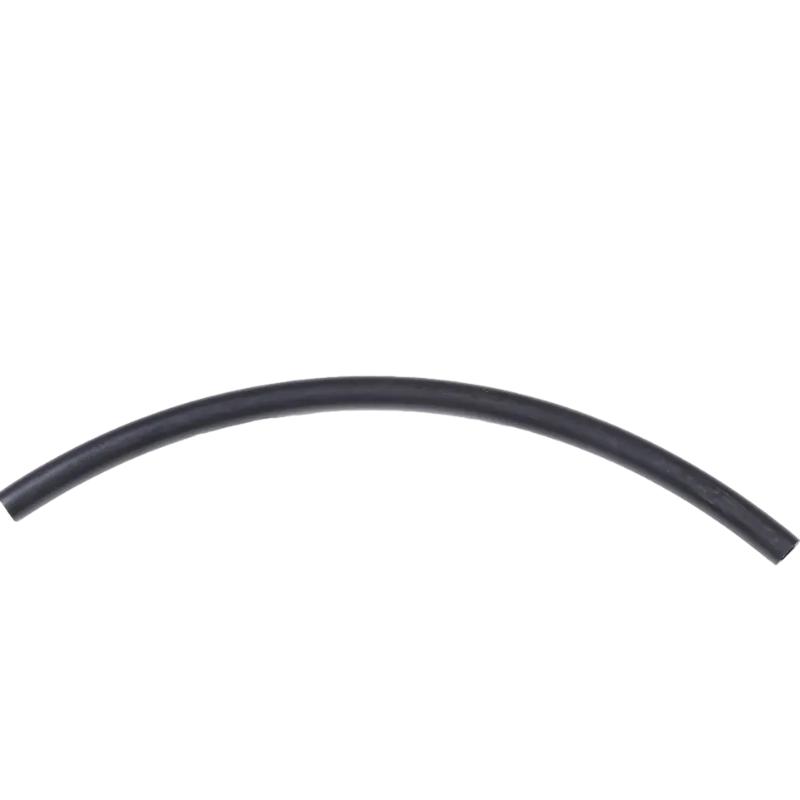High-Quality Low Pressure Power Steering Hose for Reliable Performance
Лип . 29, 2025 14:40 Back to list
High-Quality Low Pressure Power Steering Hose for Reliable Performance
Steering system durability and efficiency are pivotal for today's vehicles and industrial machinery. The low pressure power steering hose—also commonly referred to as low pressure line power steering, low pressure power steering line, or power steering low pressure line—plays a critical role in ensuring smooth operation, safety, and optimized power steering fluid circulation. In recent years, industry demands for fuel efficiency, corrosion resistance, and high-performance materials have pushed manufacturers toward technical innovation and stringent quality standards such as SAE J189, ISO, and ANSI compliance.

Market Trends & Technical Evolution
According to a 2023 QYResearch study, the global low pressure power steering hose market reached USD 420.5 million, with an expected CAGR of 4.7% through 2028. Adoption of high-end elastomers, reinforced synthetic fibers, and strict compliance with standards like SAE J189 and ISO/TS 16949 have become industry norms.
| Parameter | Typical Value | Industry Standard |
|---|---|---|
| Inner Diameter (ID) | 5/16" - 3/4" (8–19mm) | SAE J189 / SAE J2064 |
| Rated Working Pressure | 3–10 bar | SAE J189 |
| Temperature Range | -40°C ~ +125°C | ISO 1307 |
| Burst Pressure | ≥20 bar | SAE J189 |
| Material | CR / EPDM, Textile Braid | ISO/TS 16949 |
| Life Span | 5–8 Years | ANSI/SAE/ISO |
Introducing Low Pressure Power Steering Oil Hose SAE J189

The Low Pressure Power Steering Oil Hose SAE J189 is a premium hydraulic conveying solution meticulously designed for automotive, machinery, petrochemical, and metallurgical power steering systems, as well as industrial fluid transfer. Engineered with resilient synthetic rubber and reinforced textile braid, the hose surpasses industry benchmarks for abrasion, ozone, and chemical resistance, while meeting SAE J189, ISO/TS 16949, and ANSI requirements.
Manufacturing Flow: Low Pressure Power Steering Hose
The manufacturing of low pressure steering hose involves a multi-stage process ensuring exceptional precision, durability, and reliability. Illustrated below is the stepwise process integrated with industry best practices.

Key Technical Advantages: ✓ Seamless fluidity; ✓ Outstanding ozone resistance; ✓ 5–8 years service life; ✓ Custom fittings and lengths.
Technical Specification: Powerful Data-Driven Insight

| Property | KEMO SAE J189 Hose | Standard Hose |
|---|---|---|
| Inner Diameter | 6.4–19 mm | 6.0–16 mm |
| Working Pressure | 6–10 bar | 4–8 bar |
| Burst Pressure | >20 bar | 15–18 bar |
| Temperature Range | -40°C ~ +125°C | -30°C ~ +100°C |
| Material | EPDM/CR + Synthetic Fiber | Standard Rubber |
| Lifespan | 8 Years | 5 Years |
| Standard Met | SAE J189, ISO/TS 16949 | None |
Industry Applications and Performance in Real-World Scenarios

The lower power steering hose proves indispensable in applications requiring flexible, long-life, and chemically-resistant fluid transfer:
- Automotive Power Steering Systems: Ensures leak-proof fluid transfer, minimal flow loss, and robust vibration damping—even in off-road and high-performance vehicles.
- Petrochemical Facilities: Handles exposure to aggressive hydraulic fluids and extreme temperatures, outperforming generic elastomer hoses.
- Metallurgy and Steel Processing: Anti-spatter cover and abrasion-resistant design increase service intervals, reducing downtime cost by up to 20% (source: Steel Industry Journal, 2023).
- Municipal Water & Drainage: ISO 1307 conformance, with custom lining for corrosion-prone water chemistries, delivers 40% longer life vs. standard hoses.
- Special Purpose Machinery: Highly flexible, vibration-absorbing lines for robotics and smart industrial automation cells.
Manufacturer Comparison: Why KEMO Hose?
| Brand | Certifications | Material Quality | Pressure Rating | Endurance (Years) | Custom Options | Delivery/Support |
|---|---|---|---|---|---|---|
| KEMO | ✓ SAE J189, ISO/TS 16949, RoHS | Premium CR/EPDM, Aramid | 10 bar (burst >20 bar) | 8 | Yes (color/length/fittings) | 2–4 weeks / 7x24h |
| Gates | SAE J189, TS 16949 | CR/EPDM | 8 bar (burst 18 bar) | 6.5 | Common only | 4–5 weeks / 9x5h |
| Continental | SAE/ISO | Standard Rubber | 8 bar (burst 16 bar) | 6 | No | 6 weeks / 8x5h |
| Dayco | SAE | Standard Rubber | 8 bar | 5.5 | Limited | 5 weeks / 8x5h |
Tailored Solutions & Custom Engineering
KEMO’s engineering team provides low pressure power steering hose solutions tailored by:
- Inner & outer diameter (6–22mm ID, custom OD)
- Specialized lining: anti-abrasion, anti-static, chemical resistant, FDA/NSF food-grade
- Custom length/tol. up to ±0.5 mm, CNC end-fittings
- Certification: ISO/TS 16949, SAE J189/1927, RoHS, FDA, WRAS (for potable water)
- Color coding/laser-etch identification for supply chain traceability
- OEM and aftersales project support
Request a free application analysis: sales@kemohose.com
FAQs: Professional Knowledge & Industry Standards
- Q1: What is the recommended material for low pressure power steering hose?
A: CR (Chloroprene) or EPDM (Ethylene Propylene Diene Monomer) rubber reinforced with textile (polyester/aramid) fibers is optimal. This composition ensures chemical, ozone, and pressure resistance to meet SAE J189 and ISO/TS 16949 standards. - Q2: Which testing standards are required for certification?
A: Mandatory tests include pressure resistance (working & burst), bend radius, ozone exposure, and cyclic aging—per SAE J189, ISO 1307, and ANSI guidelines. Certificates like RoHS and REACH are recommended for global trading. - Q3: How does working pressure differ from burst pressure?
A: Working pressure is the maximum sustained operation limit, while burst pressure is the pressure at which catastrophic failure occurs. Engineering rules typically require a burst safety margin of ≥2.5× the working pressure. - Q4: What are common end fittings for low pressure power steering lines?
A: Standard end fittings include banjo, clamp, push-on, and thread connectors (BSP/NPT). Custom CNC-machined adapters ensure leak-proof assembly and minimal pressure drop in automotive and industrial settings. - Q5: Can I use low pressure steering hose for hydraulic brake fluid?
A: No. Due to different fluid chemistries and operating pressures, low pressure power steering hose is unsuitable for brake fluid (which demands DOT-spec hoses with higher burst pressure and fluid compatibility). - Q6: What is the recommended installation radius for optimal bending?
A: Minimum bend radius is generally 6–8× the hose's outer diameter, as defined by SAE J189. This prevents kinking and performance degradation in both mobile machinery and stationary equipment. - Q7: How long does it take to deliver custom-manufactured hoses?
A: Standard lead time is 2–4 weeks after PO for certified low pressure power steering line. Expedited production and global express shipping are available on request. - Q8: Does KEMO provide international warranty and after-sales support?
A: Yes. All hoses come with a 24-month performance guarantee against leakage, cracks, and manufacturing defects, with full technical support from KEMO’s engineering team.
Delivery, Warranty, & Technical Support
Delivery: Typical production & delivery cycle: 2–4 weeks (custom specs), with express options for urgent orders.
Warranty: 24 months product warranty (from delivery date), against fluid leakage, swelling, or manufacturing defects. Extended warranties available for contract clients & OEMs.
Support: Lifetime remote support. Engineering services: installation advice, troubleshooting, and annual wear assessment (certified technicians, ISO/TS 16949 compliance).
Industry Authority & Knowledge References
“Proper selection and periodic maintenance of low pressure power steering hose minimizes system downtime and maximizes machine and vehicle operational longevity. Adhering to SAE and ISO standards is no longer optional—it's a best practice for cost-effective fleet and industrial management.”
— Automotive Engineering Forum (2024), https://www.sae.org/publications/technical-papers/content/2021-01-0186/
- QYResearch, "Global Power Steering Hose Market 2023" (Official Source)
- Automotive Engineering Forum 2024, Market Analysis (sae.org)
- Steel Industry Journal, "Industrial Hoses and Maintenance Reduction" (worldsteel.org)
- ISO 1307:2006, Rubber and plastics hoses — Hose sizes, minimum and maximum inside diameters, and tolerances (iso.org/standard/26824.html)
Latest news
-
Refrigeration Hose-HEBEI KEMO AUTO PARTS TECHNOLOGY CO., LTD
NewsJul.30,2025
-
Refrigeration Hose-HEBEI KEMO AUTO PARTS TECHNOLOGY CO., LTD|High-Performance Refrigeration Hose Solutions
NewsJul.29,2025
-
Refrigeration Hose-HEBEI KEMO AUTO PARTS TECHNOLOGY CO., LTD|Technical Specifications&Industrial Applications
NewsJul.29,2025
-
Refrigeration Hose-HEBEI KEMO|Low Permeability&Pulse-Resistance
NewsJul.29,2025
-
Refrigeration Hose-HEBEI KEMO AUTO PARTS TECHNOLOGY CO., LTD|Low Permeability&Ozone Resistance
NewsJul.29,2025
-
Refrigeration Hose-HEBEI KEMO|Industrial Applications&Automotive Systems
NewsJul.29,2025
